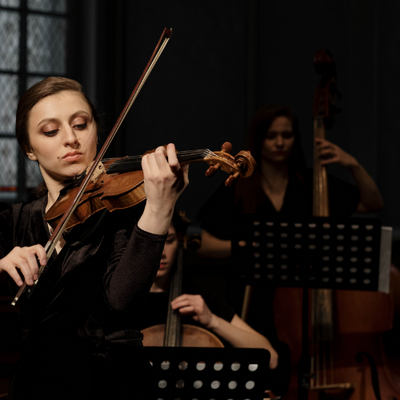Making the switch from violin to viola is a common path for string players looking to expand their musical versatility. While the two instruments share many similarities, the transition requires adjustments in technique, posture, and musical interpretation. Whether you are taking up the viola for school orchestra, exploring its deeper, richer tone, or making a more permanent switch, a thoughtful approach will help ease the transition.
Understanding the Differences

The most noticeable difference between the violin and viola is size. Violas are larger, typically ranging from 15 to 17 inches in body length, compared to the standard 14-inch violin. This additional size affects finger spacing, requiring slightly wider reaches between notes. Viola strings are also thicker, producing a warmer and more resonant tone but requiring a heavier bow arm to draw sound effectively.
The tuning is another key distinction. Unlike the violin, which is tuned in perfect fifths from G to E, the viola is tuned a fifth lower, from C to A. This tuning introduces the rich and expressive C string, which gives the viola its characteristic depth. However, it also means adjusting to reading the alto clef, which replaces the violin’s treble clef as the primary notation system for violists.
Adjusting Technique
Switching to the viola involves refining bowing technique and left-hand positioning. The larger instrument and thicker strings require a slightly slower, more deliberate bow stroke with increased pressure to produce a full sound. Violinists making the transition often find that a relaxed bow grip and a slightly more extended bow arm help maintain control and resonance.
Finger spacing must also be reconsidered. On the violin, notes are closer together, while on the viola, the hand must stretch further to achieve accurate intonation. This adjustment may take time, but practising scales and simple exercises focusing on finger placement will help build confidence.
For left-hand positioning, shifting smoothly between positions is essential. The increased string tension and finger spacing may initially feel unfamiliar, but developing a relaxed approach and avoiding unnecessary tension will prevent strain.
Navigating the Alto Clef
Reading music in the alto clef is one of the more challenging aspects of switching to the viola. Unlike the violin’s treble clef, where middle C is located on the first ledger line below the staff, the alto clef places middle C on the middle line of the staff. This shift requires a period of adjustment, but with regular sight-reading practice, it quickly becomes second nature.
A useful approach is to start with simple pieces written in alto clef while occasionally referencing treble clef equivalents. Many violists also develop a strong ability to read both clefs fluently, particularly when playing orchestral or chamber music, where treble clef is sometimes used for higher passages.
Choosing the Right Viola and Accessories

Selecting a properly sized viola is crucial to a smooth transition. Since the viola comes in various sizes, trying out different instruments and ensuring a comfortable fit can help prevent unnecessary strain. A viola that is too large may cause discomfort in the shoulders and arms, while one that is too small may limit tonal potential.
The bow also plays a role in achieving the best sound. Viola bows are slightly heavier than violin bows, designed to complement the instrument’s thicker strings. Using a proper viola bow rather than a violin bow allows for better control and a richer sound.
A suitable chin rest and shoulder rest will also contribute to comfort and playability. Since violas vary more in shape than violins, experimenting with different chin rest and shoulder rest combinations will help in finding a setup that allows for natural posture and ease of movement.
Developing a Viola Sound
The viola’s deeper and more mellow timbre requires a different approach to tone production. Bow placement, weight, and speed all influence the sound, and violists often use a slower bow with more weight to bring out the instrument’s full resonance. Exploring the instrument’s lower range and embracing its distinctive tone can be a rewarding part of the transition.
Playing with a more relaxed vibrato also enhances the viola’s warmth. While violin vibrato can be fast and intense, violists often use a broader vibrato to suit the instrument’s tonal qualities.
Building Repertoire and Enjoying the Process

Transitioning to the viola opens up an entirely new repertoire. Solo works by composers such as Hoffmeister, Stamitz, and Hindemith, as well as chamber and orchestral music featuring rich viola lines, provide opportunities to explore the instrument’s expressive capabilities.
The process of switching string instruments is as much about embracing the unique qualities of the viola as it is about adapting technique. With patience and focused practice, violinists can develop confidence in their new role as violists while discovering the beauty and depth of this often under-appreciated instrument.
Conclusion
Making the transition from violin to viola is a rewarding journey that broadens a musician’s technical and expressive capabilities. While the differences in size, tuning, bowing technique, and clef reading require careful adjustment, a structured approach to practice and instrument setup can make the process smoother. Choosing the right viola, refining tone production, and gradually expanding repertoire will help new violists feel confident and comfortable.
With time and dedication, the viola’s rich, resonant sound becomes second nature, offering a fresh and deeply expressive musical experience. Visit us online or in-store to explore our range of violins, violas and accessories.





















